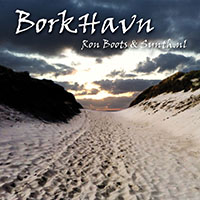 While waiting for the new external power supply I did something useful as well besides playing on the synth with 4 voices. I decided to put on the colored slider caps. Actually I wanted to wait to that it as a finishing touch when it was done, but I couldn't wait any more. I even read the manual since I didn't really understand what all sliders did, but it all makes sense to me now. Unfortunately the package with the power supply was delayed so more waiting .....
While waiting for the new external power supply I did something useful as well besides playing on the synth with 4 voices. I decided to put on the colored slider caps. Actually I wanted to wait to that it as a finishing touch when it was done, but I couldn't wait any more. I even read the manual since I didn't really understand what all sliders did, but it all makes sense to me now. Unfortunately the package with the power supply was delayed so more waiting .....
The next useful thing to do was put on the cooling blocks on the power supply. I was a bit surprised that everything so far was in the parts kit I bought from synthcube but not the m3 bolts for screwing these on. Luckily that is stuff I always have lying around at home. After that I started twisting the wires for the power supply. I did read that putting on these cooling blocks is not necessary when you change to TL062 and TL064 because the Deckard's Dream draws less current because of these and get less hot, but I decided that it wouldn't hurt either. More cooling is always better with electronics. I also took the rest of the case and started looking how everything should fit together. And then I found out the main board didn't fit in the case. Luckily there is a clear instruction about this on the build website. There is a 5 mm strips on both ends on the PCB that you can break of. There is a line cut into it to make that easier but I did it very carefully with some pliers trying not to damage anything on the main PCB.
Then finally the missing IC's I ordered arrived and I could finish all 8 voice boards. After that I started testing them by pairs. I run the calibration procedure for the voices and unfortunately one board did not wait to tune. So I put that one in solo and I could hear sound coming from it, but getting stuck on tuning. Later I found out that VCO B was running fine on the board and I did have a square and saw wave on VCO A but with a very low frequency. VCF and VCA seemed to work just fine. I started with a close visual inspection of the faulty board but couldn't find anything wrong. I started comparing it with another working board and all components were the same. Orientation of all components was the same. So I decided to swap components with a working board. Starting around VCO A. And bingo suddenly when I swapped the CEM3340 it worked! Luckily there as one extra in my parts kit, so I put the spare on on this board and voila. It worked like a charm. So now I have 8 working voice boards! Now only wait for the power supply to test them all at once.











No comments:
Post a Comment